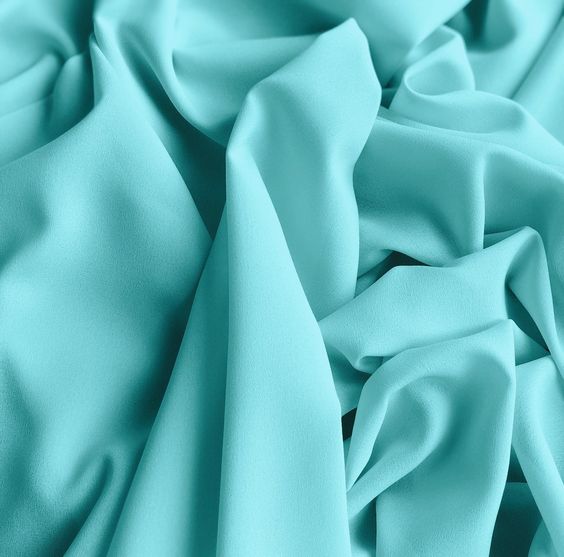Crêpe, generally spelled crepe fabric, is a lavish texture that was customarily produced using silk, however would now be able to can be produced using practically any fiber. Crepe types change from slight and lightweight to thick and heavyweight. Most crepe textures have a delightful wrap and are well known for evening outfits, fitting, and home style.
It is so normal for the creators just as the purchasers to pay special mind to textures that are wealthy in surface and give a piece of clothing a sensational appearance. The basic justification behind this texture inclination is that while the brands give the style remainder, the textures characterize a class. Silk, unique cowhide, hide, and so on are the vintage textures, and crepe, mixed silk, material are among some contemporary textures that are being liked by the design world. Among the contemporary textures, crepe is popular with clients and fashioners. Crepe has a wrinkled or grain surface that has little overlap or edges and can be produced using a few distinct materials.
A wide variety of different processes may be used to make the base textiles used in crepe fabric. Crepe yarn is made with a cycle called hard turning, which includes contorting the material filaments utilized in yarn fabricate a lot tighter than expected. The tight weaving, bending of the filaments before weaving is answerable for the trademark surface of the crepe texture, which is puckered or pebbly. The bending of strands can be achieved either through sporadic examples during the weaving system or by making long-lasting examples with rollers engraved with a crepe plan on the outer layer of a completed texture through the use of hotness and tension. Strands going from silk, fleece, polyester, or cotton can be utilized to create crepe textures. Crepe texture that utilizes polyester strands is one of the most broadly utilized textures in the article of the clothing industry, as the resultant articles of clothing are sans wrinkle and agreeable. The assortments of crepe incorporate crepe de chine, fleece crepe, Moroccan crepe, plisse crepe, and crepe georgette.
After the crepe yarn has been created, it could be colored, treated, and afterward turned into articles of clothing. In certain situations, the assembling of completed crepe items may happen at a similar office where the yarn is turned, yet normally, the work is parted among two separate firms.

Crepe de chine is a sort of lightweight fabric like silk crepe, made with profoundly contorted yarns. The texture is generally created from silk. Crepe de chine texture includes a sleek vibe, liquid wrap, and grainy surface. Lightweight, thick and breathable, Silk crepe de chine is an optimal decision for evening or wedding dresses, vaporous summer pullovers, skirts, wraps, and scarves.

This fabric has a softer and smoother appearance and is mainly made from synthetic silk-like fibers such as rayon or silk. It is a sheer lightweight fabric

This material is a kind of crepe material that is made using engineered fiber polyester. Poly crepe is generally a lightweight, slender texture that has a decent wrap. This crepe is applied for skirts, dresses, and pullovers. It here and there incorporates elastane to make a stretch-crepe

Wool crepe has a vibrant and more irregular surface and is designed from wool fabric and seldom cotton or synthetic fabrics. It is a light to medium weight crepe; it resists wrinkling and is frequently used for pants, dresses, and suits.

It is made of silk from the canton region in china, which is the place where the name shows up from. It is extremely indistinguishable to crepe de chine by all accounts yet is somewhat bulkier as the fill yarns in the weave are significantly heavier.

It is a satin fabric where one side is soft and smooth, and the other side is crinkled with a crepe appearance and feel.

It is derived by chemically treating the fabric to achieve the crinkled and puckered appearance, making a folded pleat.

It is typically produced from heavier fabric, and this uncommon crepe was the backbone of the late 19th century.

Popular during the mid-19th century, this type of crepe has a distinctive gauze-like texture. While aerophane isn’t in production anymore, many types of modern crepe mimic attributes of this classic textile.

Sometimes called flat crepe is most commonly used in making lingerie.
